site search
online catalog
CONFEDERATE T.J. ADAMS PERCUSSION CONVERSION VA MANUFACTORY RIFLE

Hover to zoom

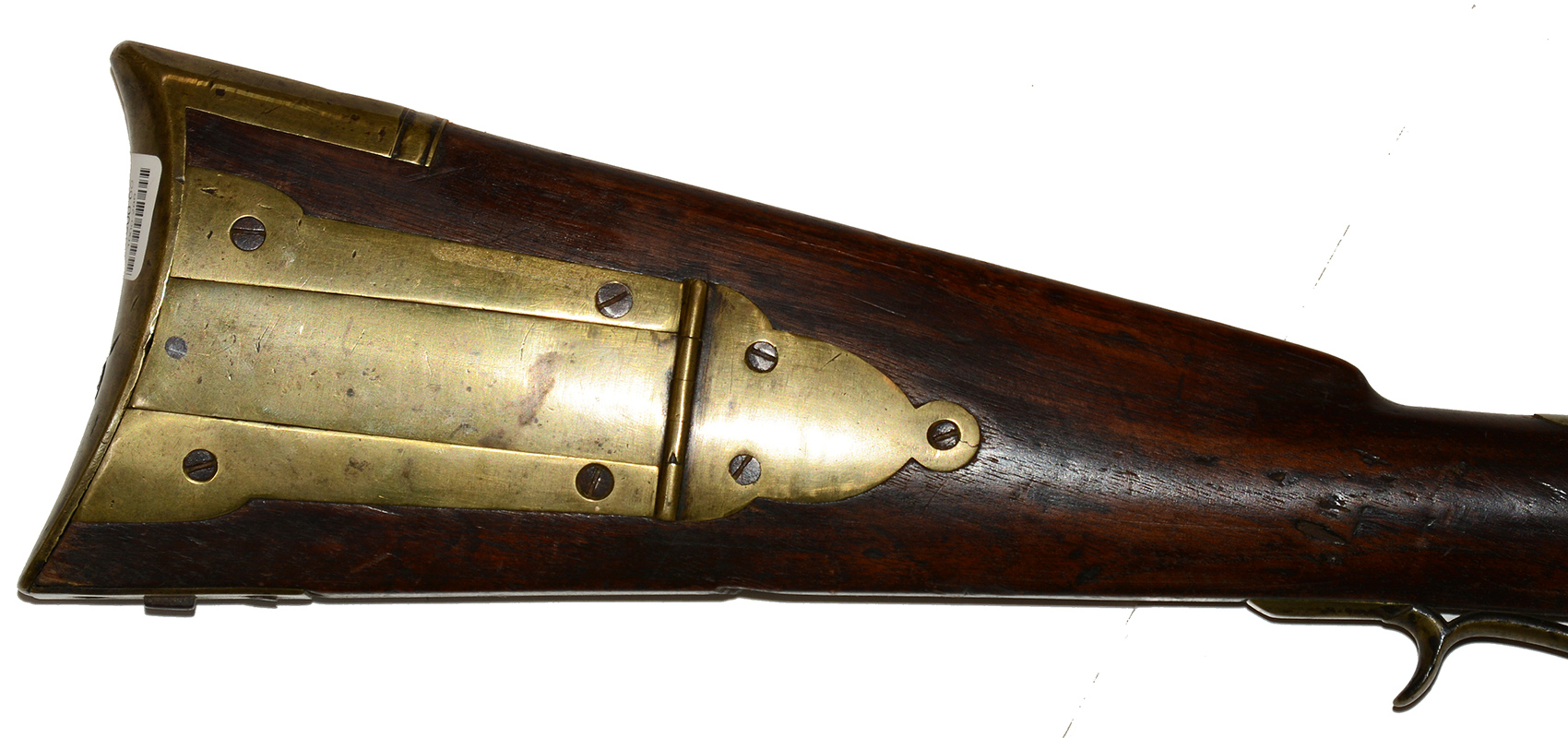
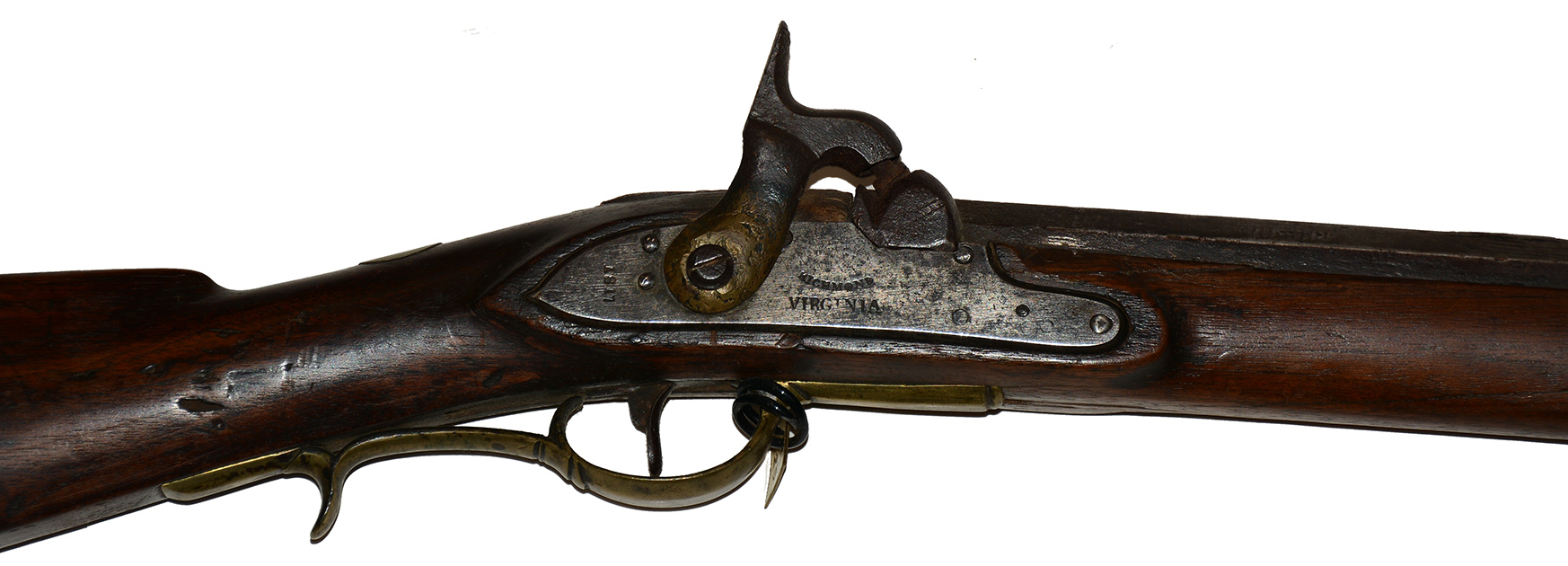
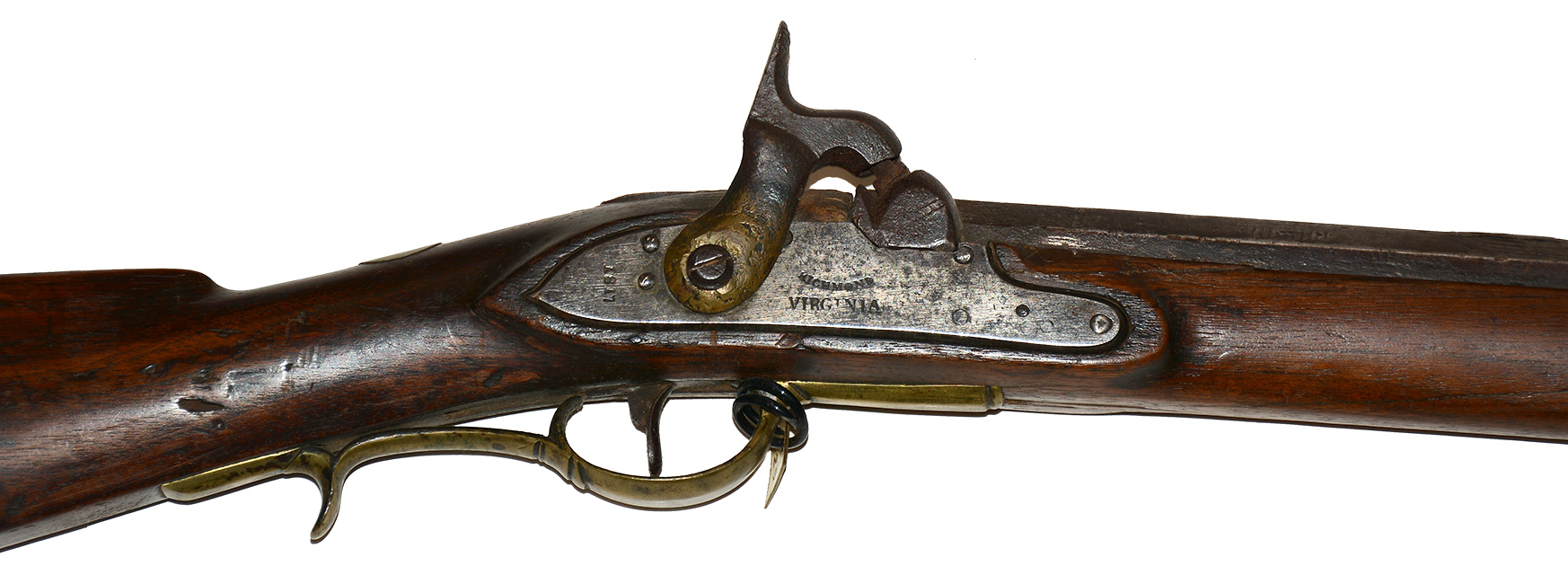

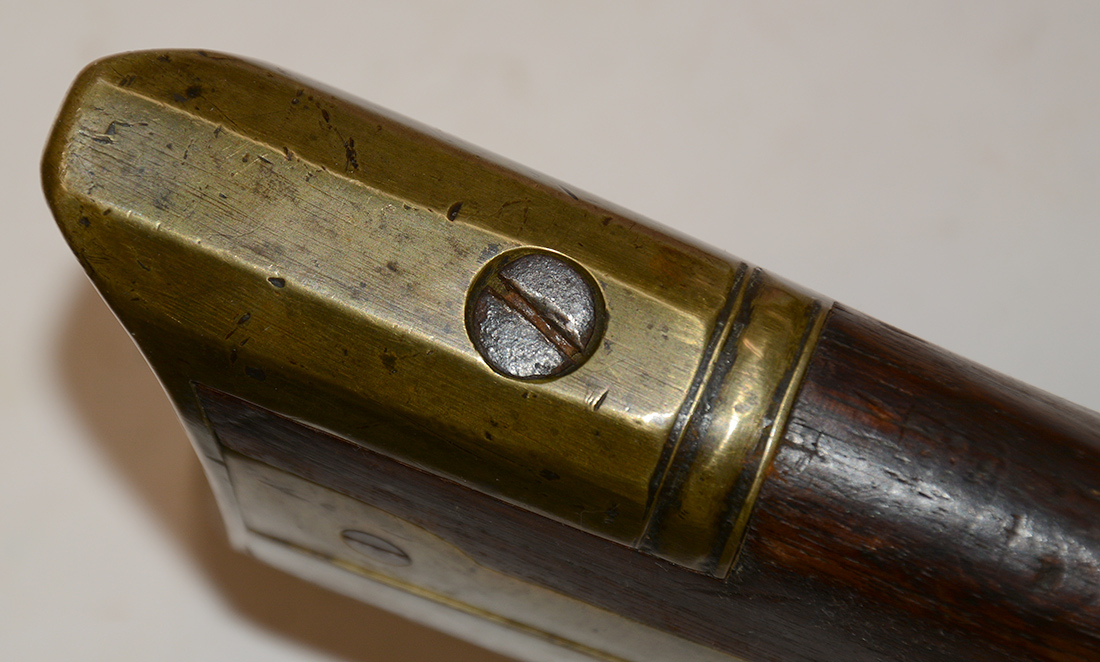
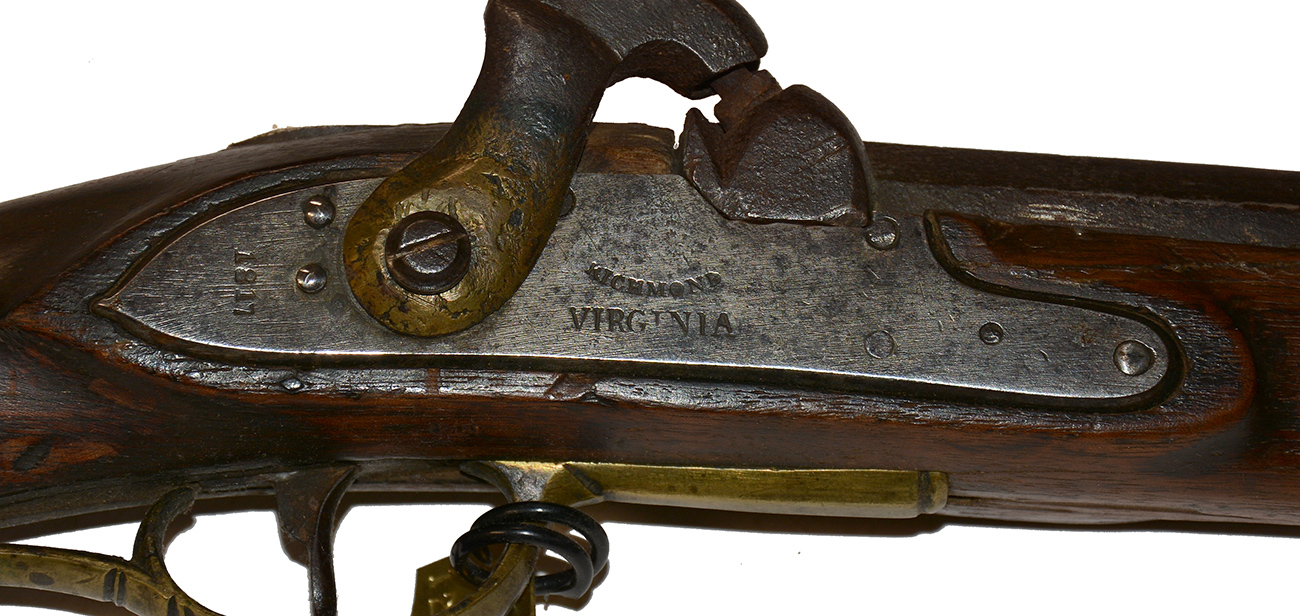


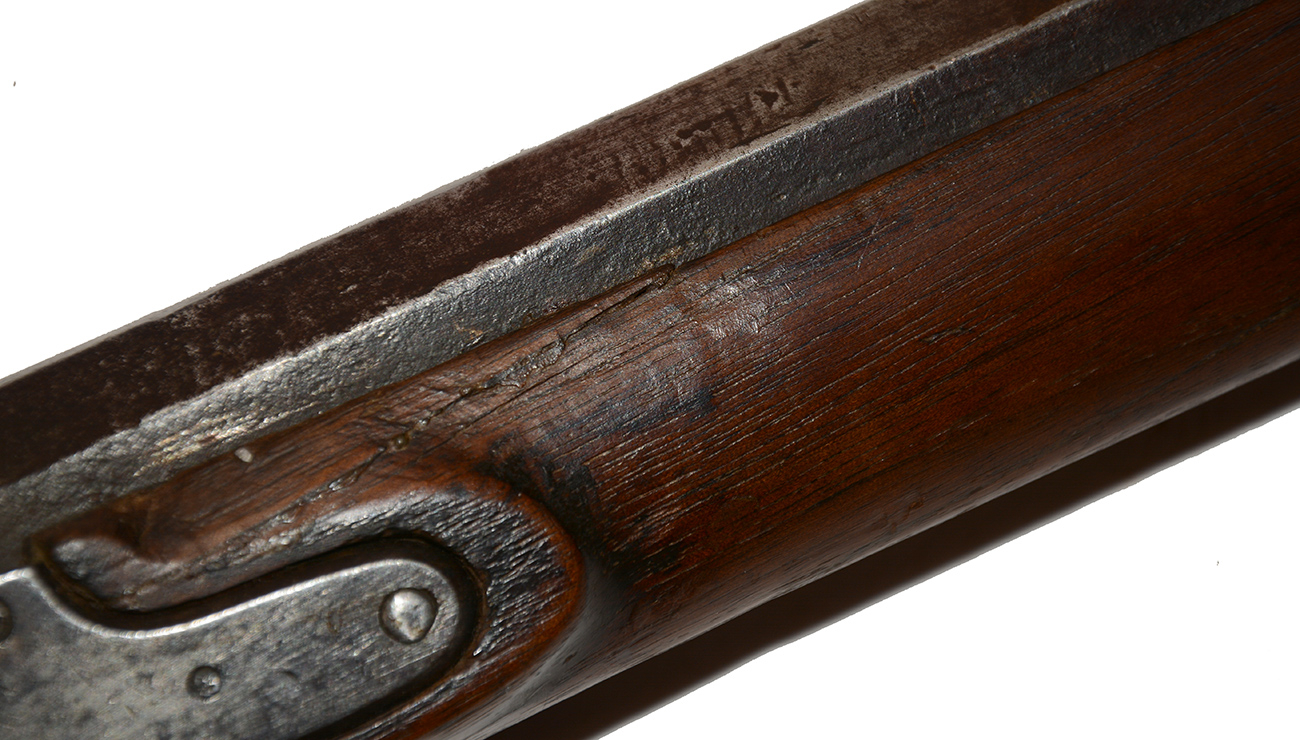
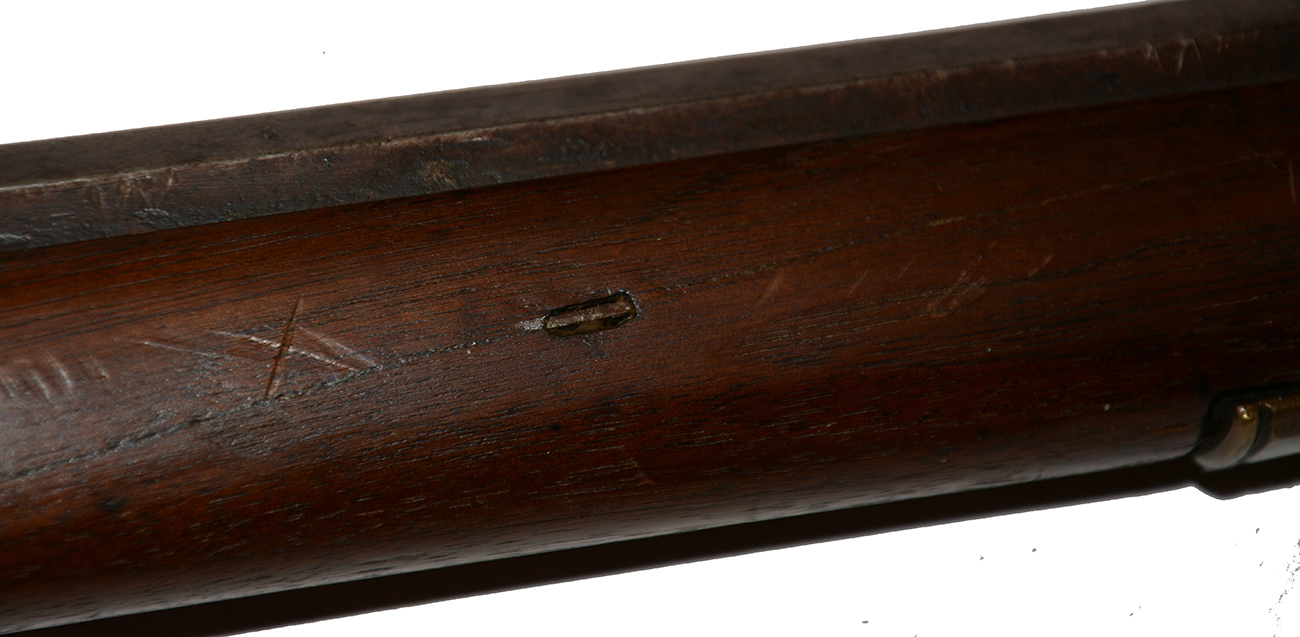
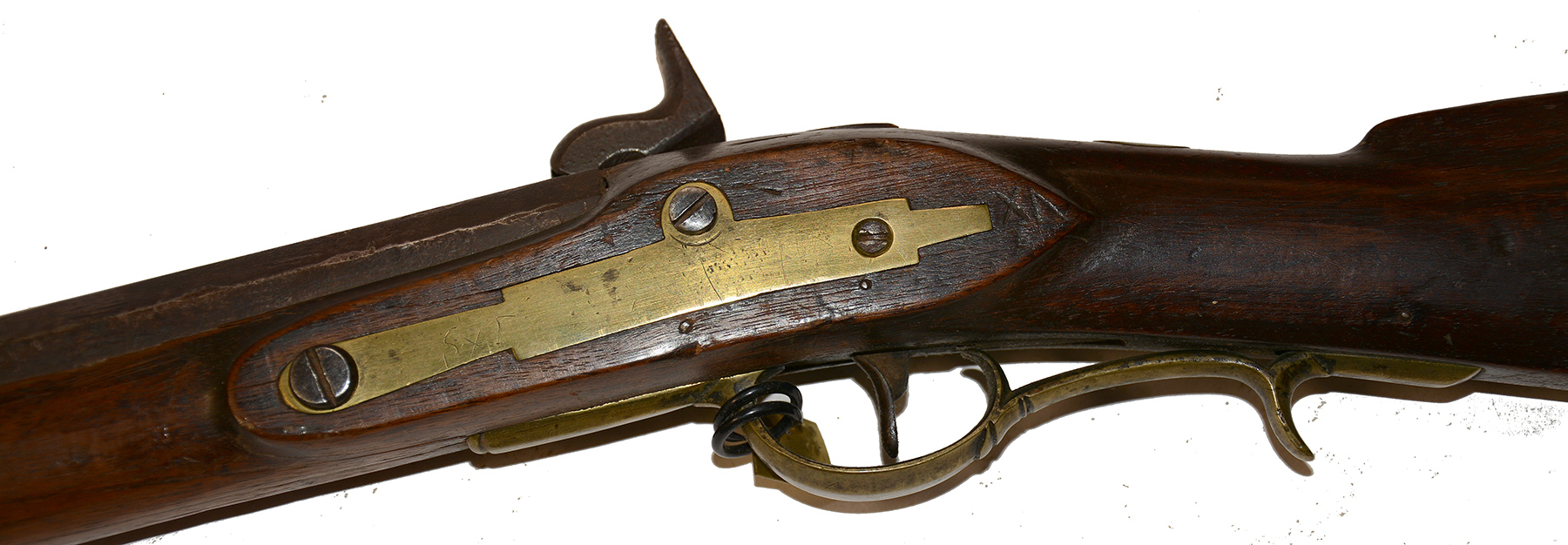
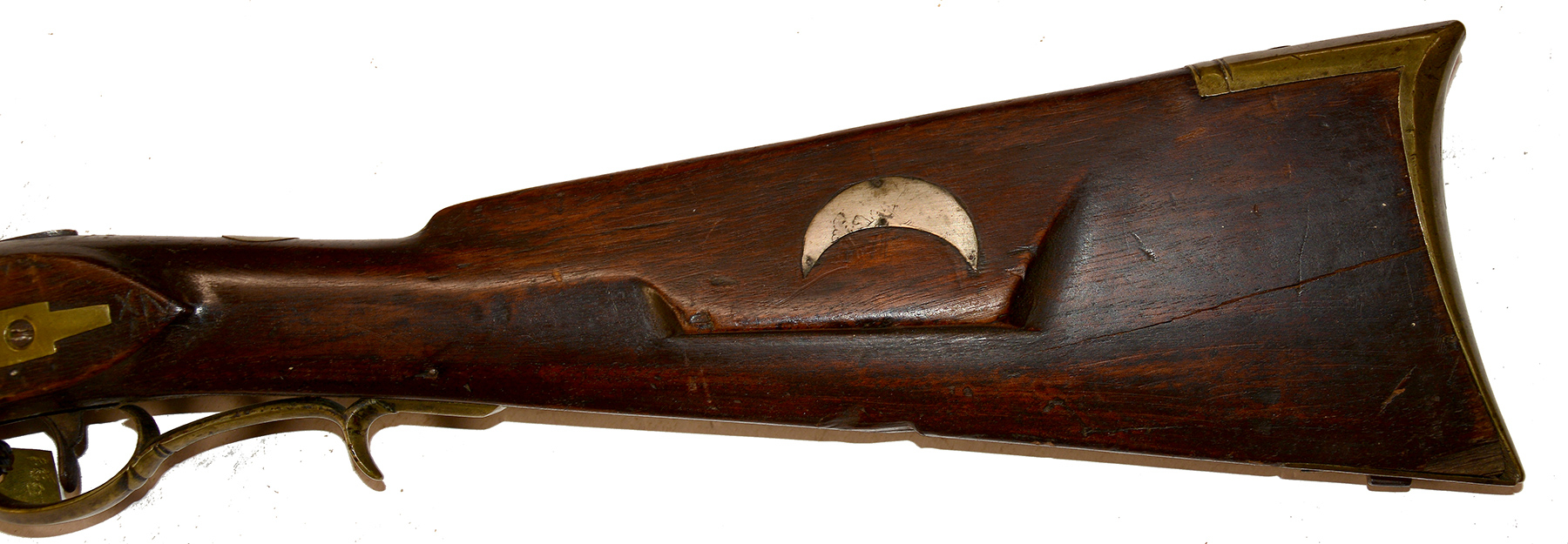
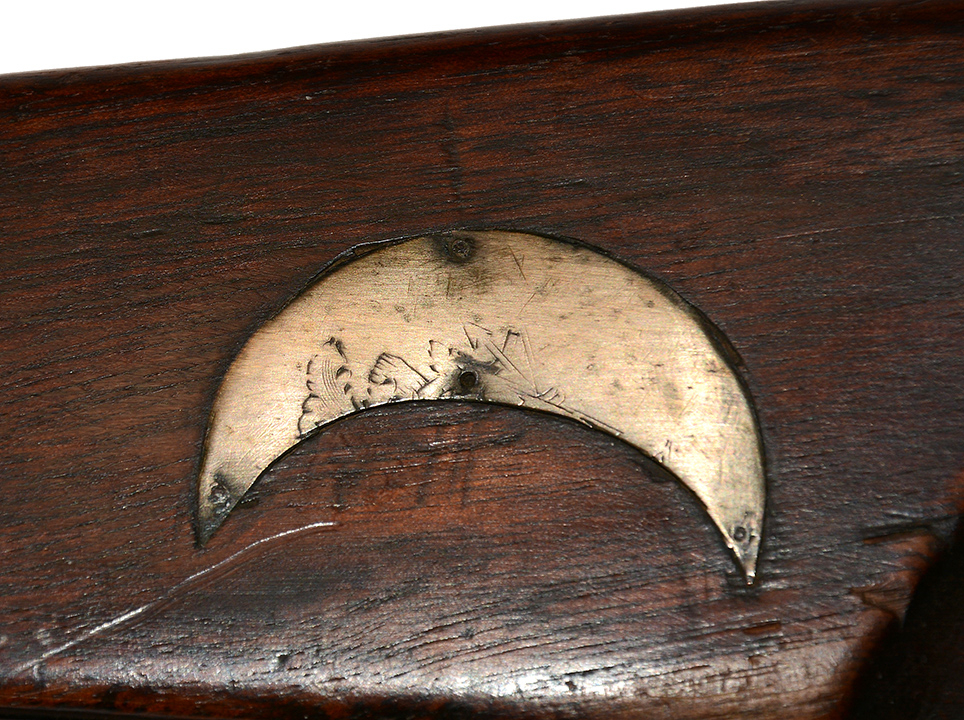
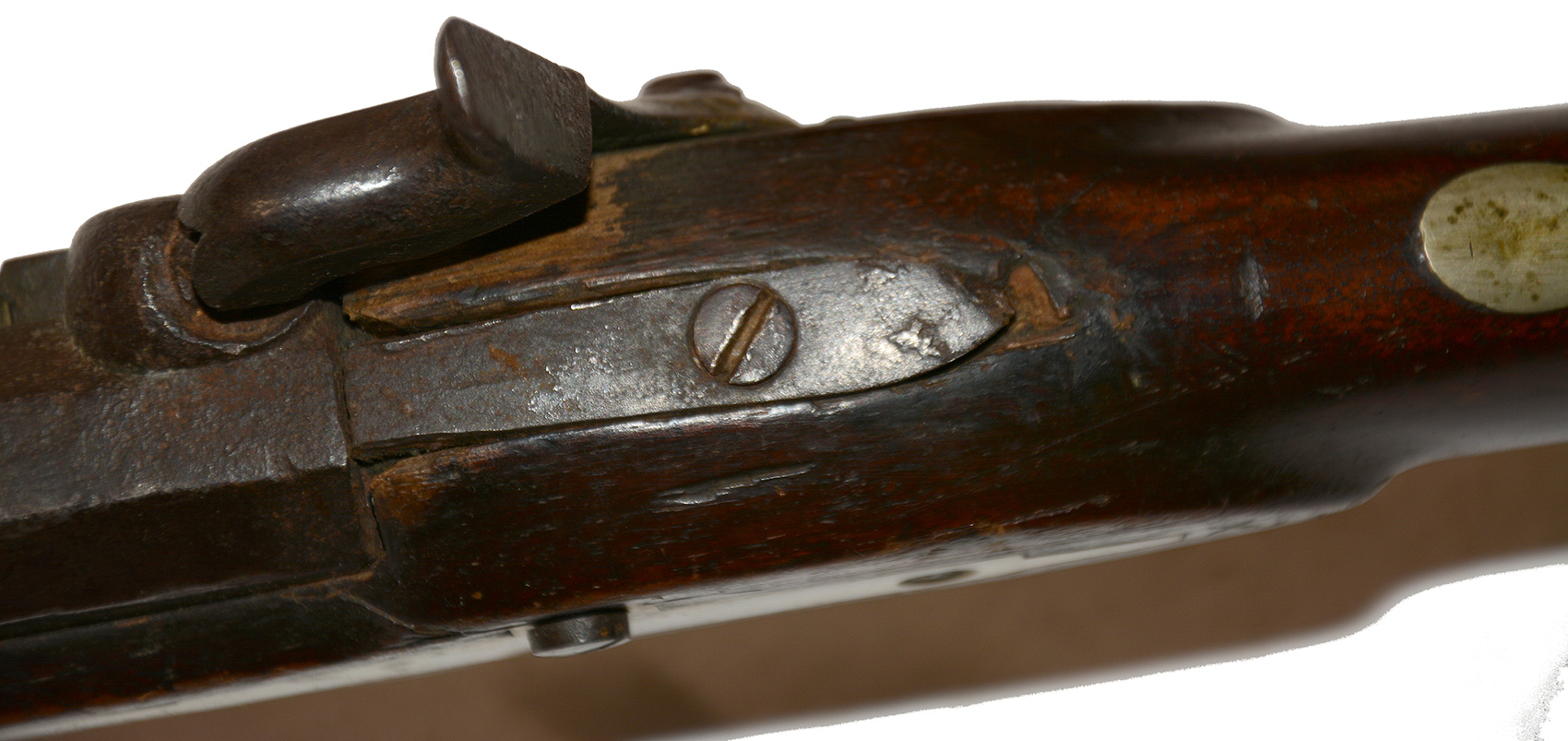
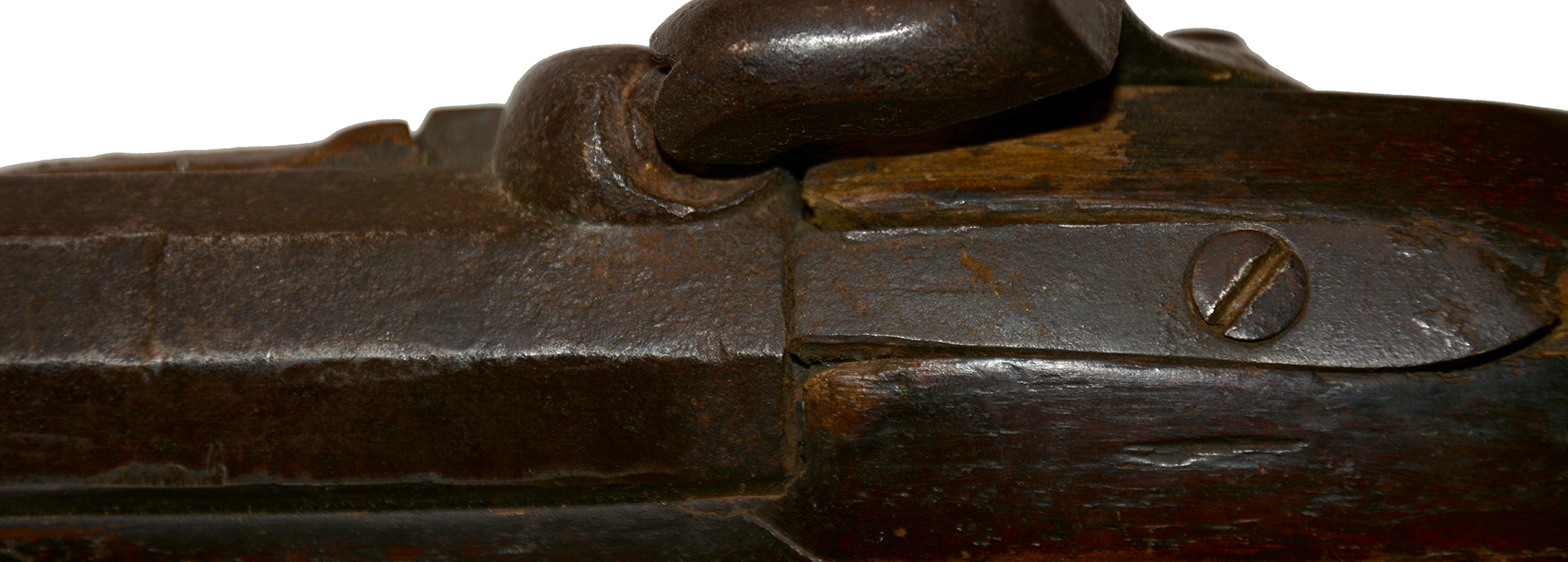

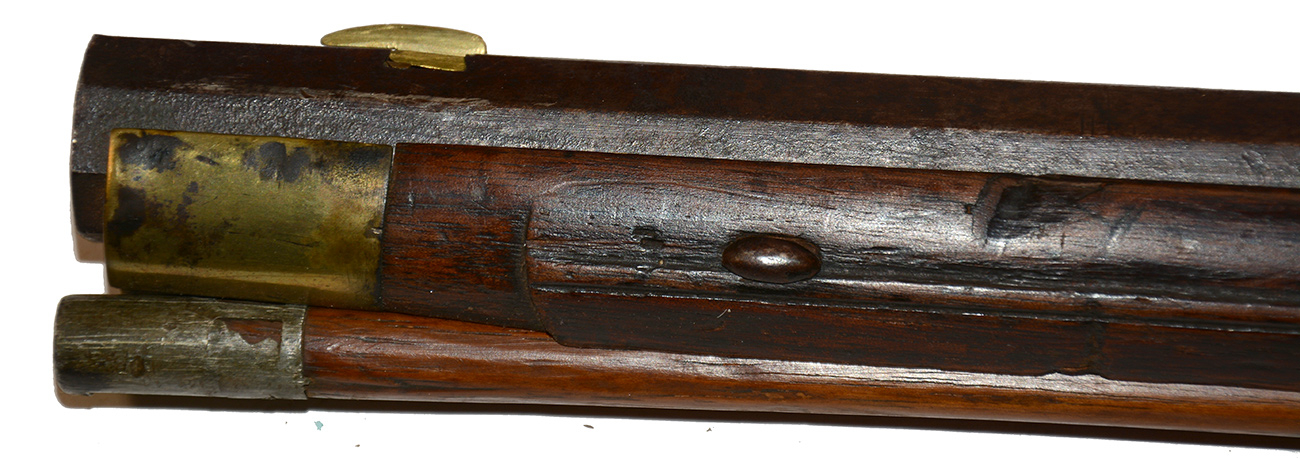
$6,500.00 SOLD
Quantity Available: None
Item Code: 1000-286
This is a very scarce brazed-bolster military percussion conversion of a second-type Virginia Manufactory rifle, one of 292 flintlock rifles finished in 1817 and most likely one of 279 converted to percussion in June and July 1862 for the Confederate States Ordnance Department by Thomas J. Adams of Richmond. A total of 2,093 rifles were produced at the VA Manufactory from 1803 though 1821. The second type was produced from 1812 to 1821 after a two-year hiatus when private contractors were unable to meet demand. It follows the standard configuration of the second type with a fully octagonal barrel and full length brass-mounted walnut stock, fitted with the simpler, second-type patchbox, nose cap and Kentucky-style triggerguard, showing the influence of the US 1803 pattern rifle. It was obviously used after the war by a civilian with the addition of a silver crescent on the cheekrest, and oval thumbpiece escutcheon on the wrist, and reduction of the barrel to a handier 32 inches from the original 38 13/16.
The lock plate is dated 1817 at rear and “Richmond” in a curve over “Virginia” forward of the hammer. This correctly omits the word “Manufactory,” used on earlier rifle lock plates, but includes “Richmond,” dropped after the first few months of production in 1817, thus further narrowing the date and lessening the number of similar rifles produced.
Virginia does not appear to have begun upgrading its arms until 1858 and then did so initially by exchanging its flintlocks with the U.S. government for percussion arms and paying the difference. It does not seem to have undertaken the work itself, by contract, until 1859 and it only picked up steam as the secession crisis reached its climax. Even then, much of the alteration took place after the arms had been turned in by early war volunteers who had carried them as flintlocks. Between October 1, 1859, and November 1, 1861, 528 Virginia rifles were issued by the state, a number that is close to known numbers eventually altered. The form of alteration used on this one, employing a three-faceted bolster and Roman numeral reassembly number on the side flat, points to T.J. Adams of Richmond as the one doing the work. Virginia records do not show payments to him for alteration of rifles, but CS records do: at the beginning of July and August 1862 for alteration of Virginia rifles. This corresponds to a period when Virginia arms were being turned back and were being appropriated by the CS government, a practice eventually stopped by protests from the state. (See Cromwell, book and ASAC article, and Murphy for details.)
The barrel is smooth metal, showing mostly a mix of light and dark gray with some thin brown and some rubbing to the edges. The front sight is in place. The rear sight is missing. The top flat shows a few dings on the right edge near the breech. The lock markings are very sharp. The lock plate shows mostly gray. The hammer is the correct short spur military hammer and shows a brazed repair around the hammer screw. The brass has a nice medium patina. The buttplate is missing one screw on the bottom. The wood has great color, finish, fit to the metal, and good edges. We see just some rounding along the barrel channel, but very good edges to the lock apron, side flat and cheek piece. There are some small dings to the forestock and a shallow sliver along the barrel channel on the left between the side flat and first barrel key. The ramrod channel is good, with the incised lines very good along the sides. The nose cap was moved down appropriately when the barrel was reduced. There is just a bit of shrinkage around the breechplug tang and a few ding at its rear. The buttstock shows a hair line on the left, angling down below the cheekrest from midpoint of the buttplate.
This is a very good example both of the VA Manufactory Rifle and an early-war Confederate military conversion by a known firm. The three-faceted breech is characteristic of Adams’s work, as is the use of Roman numeral reassembly numbers. We have not pulled the barrel or hammer to look for them, but an “X” or “XI” is clearly visible at rear of the side flat, one of the several places he marked them, perhaps working in lots of twenty as they had been crated. [sr] [ph:L]
DISCLAIMER: All firearms are sold as collector's items only - we do not accept responsibility as to the shooting safety or reliability of any antique firearm. All firearms are described as accurately as possible, given the restraints of a catalog listing length. We want satisfied customers & often "under" describe the weapons. Any city or state regulations regarding owning antique firearms are the responsibility of the purchaser. All firearms are "mechanically perfect" unless noted, but again, are NOT warranted as safe to fire.
~~~~~~~~~~~~~~~~~~~~~~~~~~~~~~~~~~~
THIS ITEM, AS WITH ALL OTHER ITEMS AVAILABLE ON OUR WEB SITE,
MAY BE PURCHASED THROUGH OUR LAYAWAY PROGRAM.
CLICK HERE FOR OUR POLICIES AND TERMS.
THANK YOU!
Inquire About CONFEDERATE T.J. ADAMS PERCUSSION CONVERSION VA MANUFACTORY RIFLE
Most Popular
Historical Firearms Stolen From The National Civil War Museum In Harrisburg, Pa »
Theft From Gravesite Of Gen. John Reynolds »
Selection Of Unframed Prints By Don Troiani »
Fine Condition Brass Infantry Bugle Insignia »
British Imported, Confederate Used Bayonet »
Scarce New Model 1865 Sharps Still In Percussion Near Factory New »
featured item
1863 PATTERN US CAVALRY GUIDON FROM THE 1st CONNECTICUT CAVALRY
This cavalry guidon was formerly in the personal collection of Jim Stamatelos, well known Civil War collector, dealer, and major contributor of items illustrated in the Time-Life volume “Echoes of Glory:” Arms and Equipment of the Union.” We… (433-14). Learn More »


